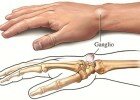The blood plays an essential role in your body. If your blood is not healthy and there is no adequate amount of it, various diseases can occur which can even be lethal.
One important role of blood is clotting. In case of a cut or injury, your blood prevents its flow to prevent excessive loss of blood from your body.
On the other side, there are some dangerous blood clots. These clots form inside the veins, especially in the legs. This condition is called deep vein thrombosis or DVT.
The factors that may cause vein thrombosis are: inflammatory conditions like rheumatoid arthritis, smoking, hormone therapy like taking birth control pills, obesity, chemotherapy, pregnancy, cancer especially lymphomas, brain, ovarian, pancreas and brain cancer, lung disease and heart disease.
Blood clots are especially common when a person is immobile like after an accident or surgery. Genetics can also influence the occurrence of the condition.
DVT is dangerous and sometimes even lethal. Broken blood clots may even end up in the lungs and stop the flow of blood in this organ.
A blood clot in the lungs known as pulmonary embolism or PE and it is a medical emergency. Between 60,000 and 100,000 people each year in US die due to PE or DVT.
There are usually no symptoms of DVT, yet there are some signs noticed by people that are important to know in order to protect yourself from this dangerous lethal condition.
Even though the following signs and symptoms may seem similar to the symptoms of other conditions, you should seek medical help if you have a condition that is a possible risk factor for DVT.
1. Swelling
If you notice that one leg is more swollen than the other, or you notice swelling in both legs, you should know that this is the first sign of DVT and the swelling is called leg edema. When standing or walking, you may feel that there is fluid buildup in your leg.
Even though swelling of the legs may mean a lot of things, if you are experiencing other symptoms of DVT or you have some risk factor for developing the condition contact a doctor for the problem.
2. Tenderness and pain
Tenderness and leg pain are also one of the most common symptoms of DVT. You may feel burning and sharp pain in the leg, especially in the calf region or in the middle of the tights to the outer sides.
The most extreme pain is experienced when walking, as then there is pressure on the blood clots. People with DVT feel ease of the pain when they rest for a certain period of time, and when they start walking again the pain is back. If you feel this pattern of pain or there is pain when you squeeze your calf, seek medical help.
There is also Homan’s test for DVT. If the person experiences pain when the leg is straight and up and the toes are pulled with the hands, there is a possibility of DVT.
Pain usually does not occur when lying down or sitting, unless the clots are in an advanced stage.
3. Unusual warmth
In case of DVT there may be warmth in the area where there is a blood clot. The warmth is especially experienced when touching that area.
If you feel pain in some area of the leg after walking, touch that area. If there is warmth seek medical attention as soon as possible.
4. Discoloration of the skin
There may be skin discoloration, usually red or blue, in the area of your leg where the blood clot developed.
A blood clot is a trauma of the vein that causes inflammation of the vein, so it may cause skin discoloration. This area of the skin may even become dry, flaky and itchy. Don’t scratch the area to prevent further irritation of the skin and the blood clot.
5. Weakness
In case of DVT, there may be weakness in the quadriceps which is in the middle of the thighs.
This weakness of the legs may be accompanied by mental weakness and dizziness which go away after resting and drinking fluids.
Even though this is not one of the most common symptoms of DVT, it has been noticed in many DVT patients.
These symptoms indicate a blood clot in the leg which is not detached itself yet. The following symptoms indicate advanced DVT and beginning of PE.
6. Fever
Low-grade fever is a sign of advanced DVT. The blood clot is already in your lungs and causes PE.
7. Shortness of breath
Shortness of breath is another sign of serious DVT and PE. The blood clot is in your lungs, obstructing both the blood flow and air flow.
Shortness of breath called dyspnea is the most common symptom of PE and according to studies is experienced by most of the patients with PE.
Except of shortness of breath, advanced DVT and PE may also be signaled by abnormally rapid and quick breathing.
8. Pain in the chest
Sharp pain in the chest is often experienced as the blood clot blocks your lungs and makes it difficult to breath. Most patients with PE and DVT reported this symptom.
9. Cough
Cough along with shortness of breath is a common symptom of DVT and PE. The coughing may also appear together with blood.
The blood clot in the lungs makes an obstruction, so it is difficult to breath and there is an irritation that is manifested through coughing.
10. Excessive sweating
Excessive sweating along with the above mentioned symptoms is often experienced by people with DVT and PE.
Feeling light-headed may also occur.
According to recent studies, PE in an early stage is often diagnosed due to the occurrence of night sweats.
Blood clots from the legs may also travel to the brain and the heart, and in this case they can cause a stroke or a heart attack.
In conclusion, if you are experiencing one or even more of the above mentioned symptoms, seek a medical advice and detect deep vein thrombosis or pulmonary embolism early.




